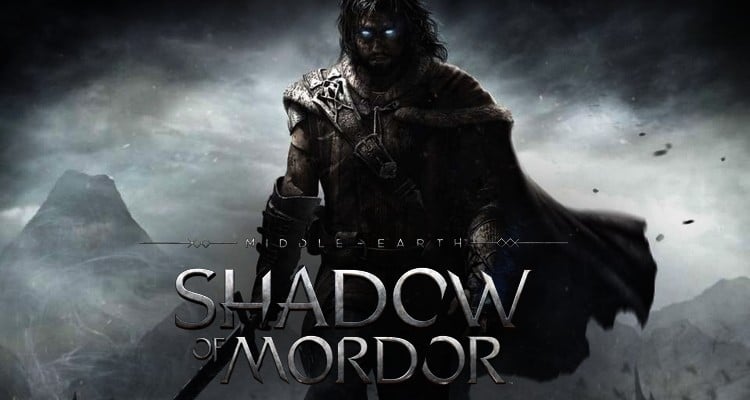
Middle-earth: Shadow of Mordor
Monolith Productions/Warner Bros.
It must be made clear from the beginning that I am a big time Tolkein-phile. I’ve read all of his works (except for the upcoming 100 year old never before published The Story of Kullervo), with the original Hobbit being among my all-time favorites, period. Unfortunately, the same can’t be said for video game adaptations of Tolkein’s beloved universe.
While I did like 2005’s The Lord of the Rings: The Battle for Middle-earth II, I felt that other games which tried to capture that Tolkeinesque magic were lackluster attempts; paltry offerings upon the throne of one of the most creative literary geniuses of all time. You can only imagine my chagrin when a friend told me about the latest game based in Middle-earth, aptly named Middle-earth: Shadow of Mordor. He’d played the beta and regaled me with a rambling, almost nonsensical report of his initial play throughs. Since he is an ardent appreciator of Tolkein in his own right, I wasn’t completely dismissive of his diatribe altogether.
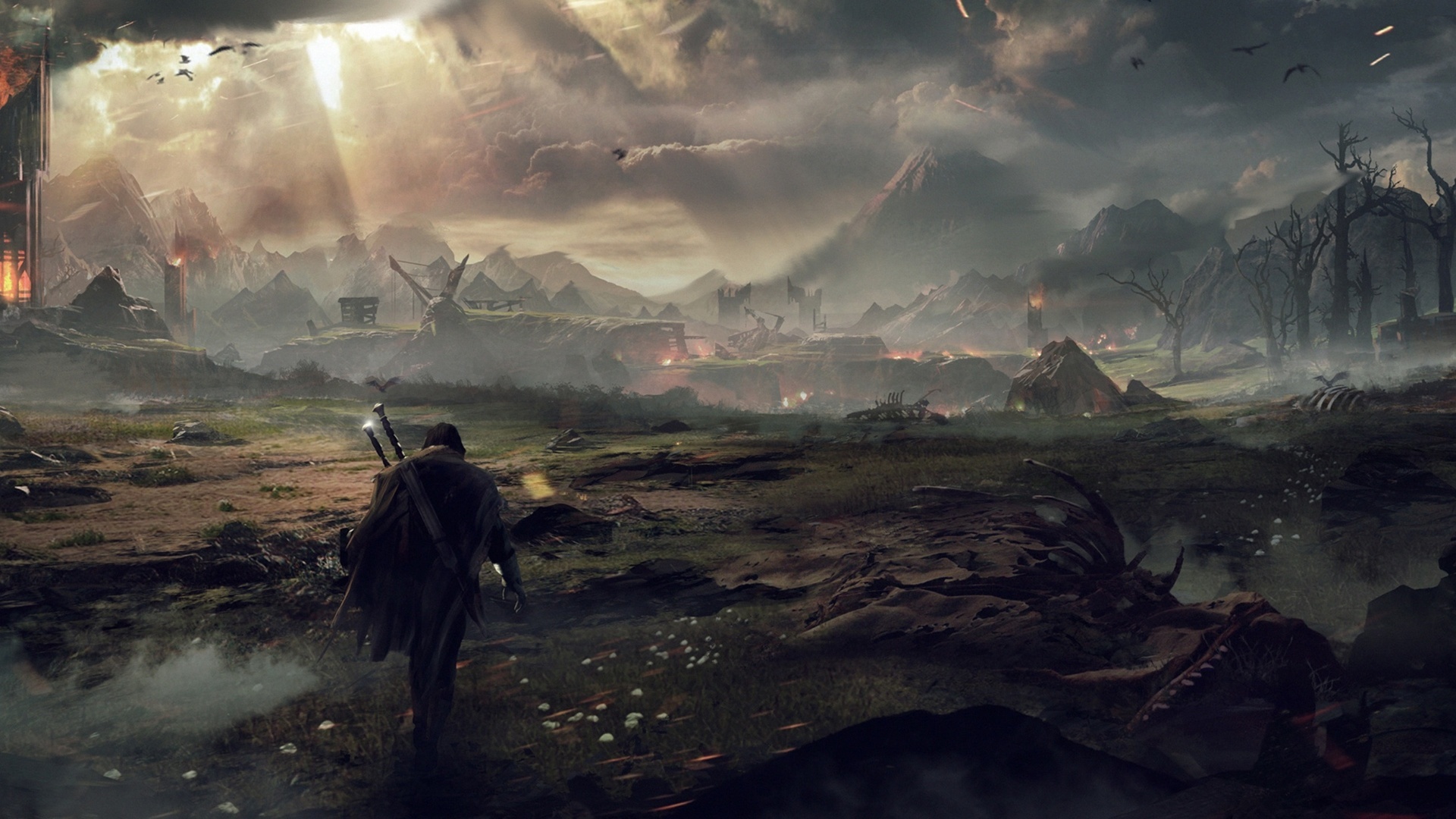
After hearing additional positive feedback from the gaming PC crowd, I decided to try Shadow of Morder to see what all of the hubbub and hullabaloo was about. Upon booting it up for the first time, I was immediately struck by the opening scenes which introduced the game’s main protagonist, gritty yet good-hearted Talion, along with his son and wife who live atop Black Gate. All is fine and dandy until a particularly baleful baddie named Black Hand shows up with a few of his minions and slaughters Talion and his family. Instead of entering the void, Talion finds himself inhabited by an elven wraith which offers him a chance at redemption for not being able to protect his family, and revenge upon those who slew them.
This very powerful and moving sequence really stood out from other games of similar ilk; it was not only riveting in its own right, but gave me a compelling why to go along with the unfolding how. The how in question is also contained within this beginning set of scenes, as the game introduces you to the basic gameplay mechanics and sets the stage for all manner of clandestine sneaking about and quick and vicious violence. These elements were introduced subtly, and it never felt like “Okay, this is the artificially derived tutorial part where I learn how to do this or that.” It felt natural and organic.
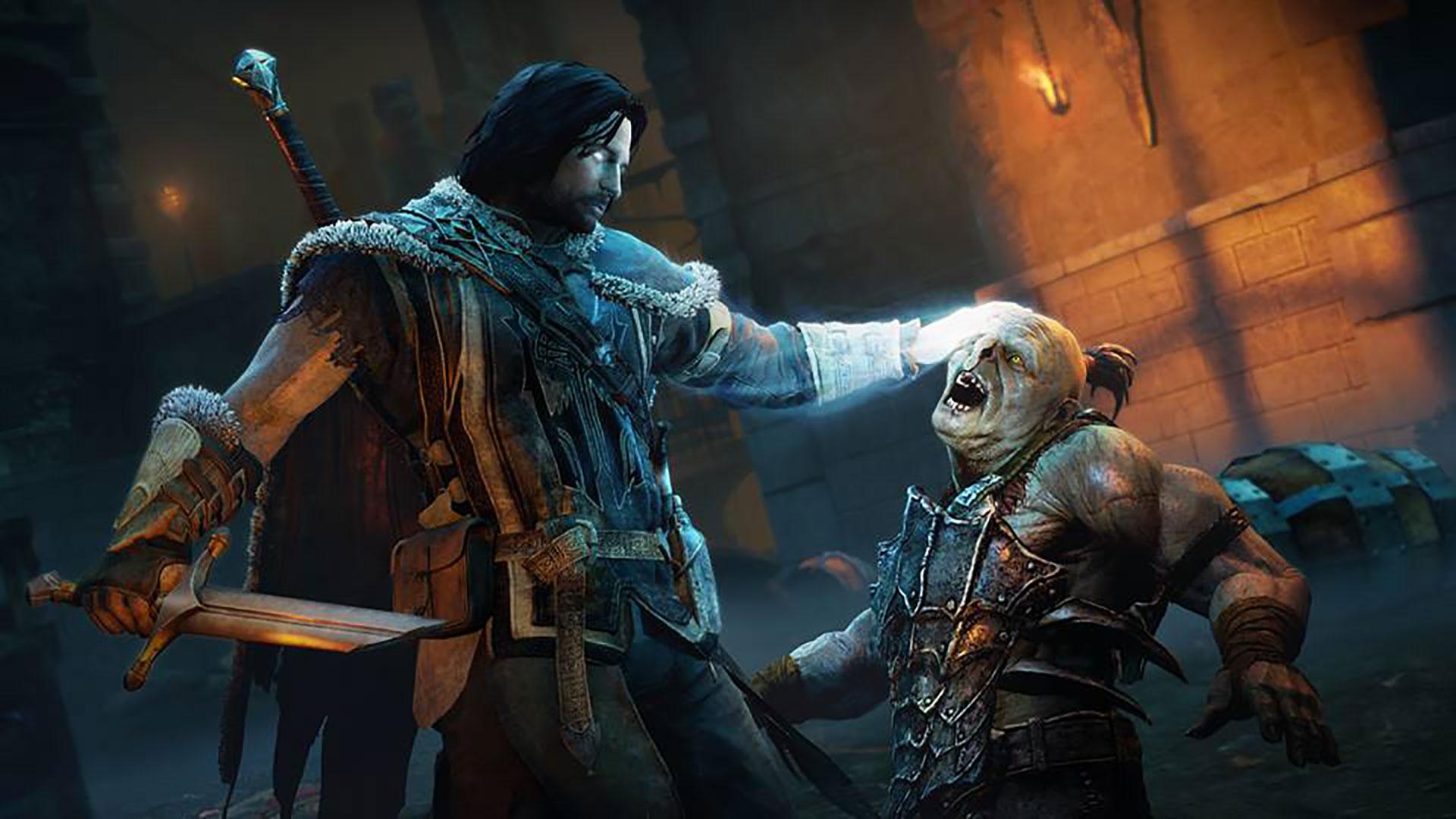
Once you are let loose into Middle-earth: Shadow of Mordor’s expansive open-world environs, you’ll quickly discovery it’s much vaunted and bandied about Nemesis system. As you fight, overcome, and then interrogate the various orc captains spread across the map, you’ll realize that these officers of Mordor have their own little political machinations going on. These colorful Cretans are all vying for dominance within Sauron’s army, and are constantly trying to one-up one another for both prestige and power. The five main orc war chiefs each are surrounded by elite-level captains, as well as an assortment of regular troops. This makes getting to them a daunting task, and that’s where conducting your forceful interviews come into play.
Each of the captains have their own motives, strengths, weaknesses, and preferred style of combat, which may all be exploited in order to defeat them. I found this aspect of the game really intriguing, as it forced me to plot and connive in order to have a chance at taking out these boisterous blowhards. I recall one particular captain who had an insect phobia, and so upon stealthily sneaking up on him, I loosed an arrow not at him, but at an insect nest above his head. This sent the normally intimidating green goliath scampering off as far as his feet would carry him. I guffawed as Talion chased the panicked villain halfway across the map before finally catching up to and dispatching him.
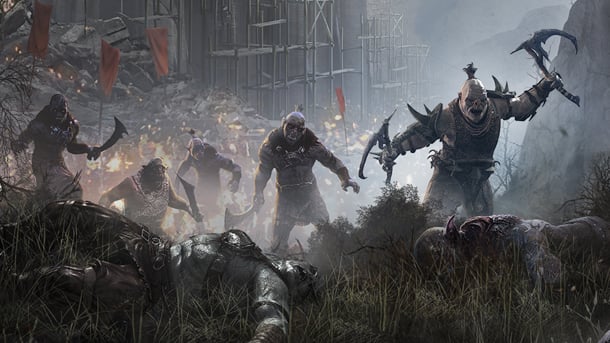
Speaking of which, the combat system of Middle-earth: Shadow of Mordor is extremely well thought out. Anyone who’s played any of the recent Batman Arkham games will immediately recognize the mechanics. Intuitive controls for parrying and attacking with Talion’s sword are well implemented, coupled with the ability to effortlessly pull out and fire his bow. As the titular hero defeats more enemies and gains experience, he’ll acquire additional abilities and combat moves. This not only makes him more of a threat but opens up new options for chaining together attacks for more varied results. Being able to shoot an orc with your bow and then teleporting out of harm’s way and rematerializing behind him in order to administer a coup de grace never gets old. Pulling off other similarly devilish sequences begin to have a cinematic quality to them, as if playing out in a well-crafted action film.
The graphics on display are simply astounding, and really serve to immerse players more fully into this carefully constructed world. As in my review of The Witcher 3, you can tell that the developers were passionate about bringing their fantasy realm as close to living, breathing, life as possible. Everything, from the jaw-dropping environments, to the spell and combat effects, are well rendered, and never pull you out of the world. 4k gaming folks will be especially pleased by some of the most stunning visuals ever presented in a fantasy-themed video game, and gaming PC aficionados in general are in for a real treat.
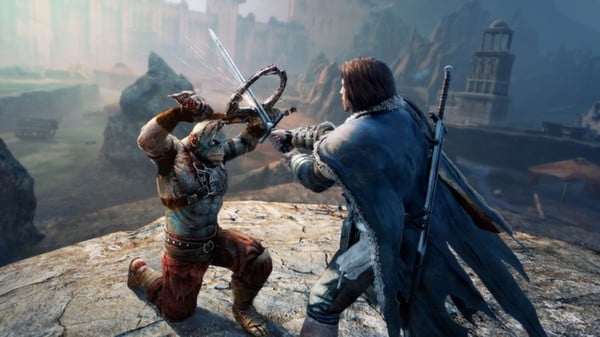
As with me, if you’ve ever wanted to play a game that does right by the works of Tolkein, grab a copy of Middle-earth: Shadow of Mordor, and be whisked away to a high-fantasy world like no other. While the story isn’t the most original out there, it is compelling enough to keep you engaged and wanting to complete Talion’s perilous quest.
SCORE: 86%
Kane’s Conclusion:
Yes, Middle-earth: Shadow of Mordor’s graphics are spectacular, but do require some horsepower under your gaming PC’s hood in order to really shine. Here’s a beast of a gaming machine that can deliver all of the eye-candy that you crave:
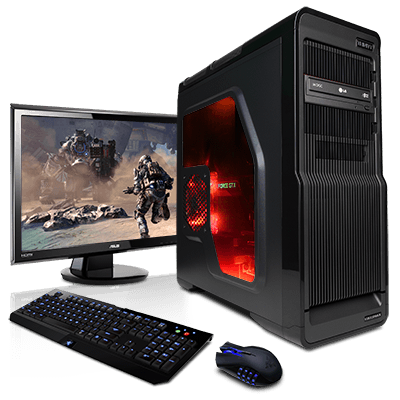
Visit CyberpowerPC’s website to check out all of the other great deals as well!